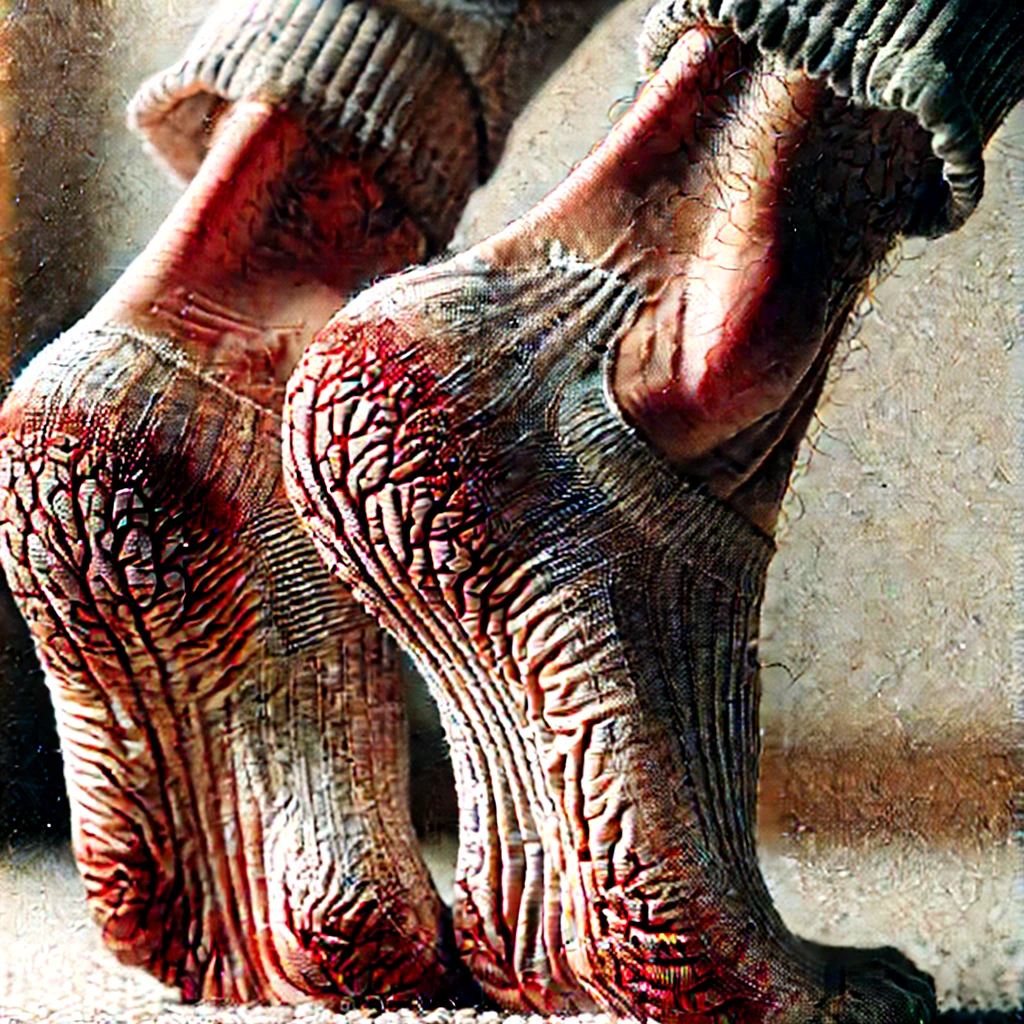Living with diabetic neuropathy often means dealing with persistent foot pain, burning sensations, and a heightened risk of ulcers due to nerve damage and poor circulation. Everyday steps can become uncomfortable, and ill-fitting shoes or unsupportive insoles only worsen the problem. Finding the right insoles for diabetic neuropathy is critical—not just for comfort, but for protecting foot health and preventing serious complications.
The best insoles for diabetic neuropathy combine superior pressure relief, soft yet supportive cushioning, and breathable materials to keep feet safe and comfortable. We evaluated over 30 models, focusing on key features like Plastazote foam, memory foam, deep heel cups, and SADMERC approval, while prioritizing user feedback and podiatrist-recommended designs. Our top picks balance performance, comfort, and value to meet the unique needs of sensitive, neuropathic feet. Keep reading to discover the insoles that offer real relief.
Best Options at a Glance

Dr. Scholl’s Pressure Relief Insoles
Best Overall
- Clinically proven
- Podiatrist
- Reduces hotspots
- Burning, tingling, throbbing
- Improves warmth

U1uckyfeet Soft Therapeutic Insoles
Best Budget Friendly
- Memory foam, PU
- Diabetic support
- Shock-absorbing
- All-day
- Wipe clean

INOCEP Diabetic Insoles Heat-Moldable
Best Heat-Moldable Option
- Diabetic Insoles
- EVA closed cell
- Shore A 25u00ba u00b15u00ba
- Shore A 40u00ba u00b15u00ba
- Self or heat mold

Spenco Medics Diabetics Plus Insole
Best Premium Support
- Plastazote Foam
- Deep Heel Cupping
- TOTALSUPPORT
- Premium SpenCore
- Memory Structured Foam

SoleAid Thera2K 2-Layer Insole
Best SADMERC Approved Value
- Diabetic Insole
- 2-Layer
- EVA foam
- Women: 11-12 / Men: 9-10
- SADMERC HCPC A5512
Best Insoles For Diabetic Neuropathy Review
Choosing the Right Insoles for Diabetic Neuropathy
Finding the right insoles can significantly improve comfort and quality of life if you experience foot pain related to diabetic neuropathy. Here’s a breakdown of key features to consider when making your selection.
Pressure Relief & Cushioning
This is arguably the most important factor. Diabetic neuropathy often causes nerve pain, burning, and tingling, and these sensations are frequently exacerbated by pressure on the feet. Insoles designed for neuropathy prioritize distributing weight evenly across the foot, reducing pressure points. Look for insoles with features like:
- Plastazote foam: A soft, cushioning material that minimizes friction and pressure.
- Memory foam: Conforms to the unique shape of your foot, providing customized support and reducing pressure hotspots.
- Multi-layer construction: Combining different densities of foam for both cushioning and support.
- Deep heel cups: Cradle the heel, further distributing pressure and improving stability.
Better cushioning and pressure relief directly translates to reduced pain and a lower risk of developing foot ulcers, a serious complication of diabetes.
Support & Arch Type
While cushioning is vital, adequate support is also crucial. Insoles should offer gentle arch support to maintain proper foot alignment and prevent overpronation (rolling inward) or supination (rolling outward).
- Full-length vs. ¾ length: Full-length insoles provide complete foot support, while ¾ length focus on the heel and arch. Consider your shoe type and level of support needed.
- Soft arch support: Crucial for neuropathy sufferers, as rigid arch support can sometimes increase pressure on sensitive nerves.
- TOTALSUPPORT footbed: A design that provides support across the entire foot, distributing weight evenly.
Proper support reduces strain on your feet and legs, contributing to overall comfort and reducing fatigue.
Material & Breathability
Diabetic feet are often more susceptible to moisture-related issues. Therefore, breathability and material choice are important considerations.
- Airflow channels: Promote ventilation to keep feet dry and reduce the risk of fungal infections.
- Moisture-wicking materials: Help draw sweat away from the skin.
- Hypoallergenic materials: Minimize the risk of skin irritation.
Keeping your feet dry and comfortable is essential for preventing blisters and maintaining healthy skin.
Customization & Fit
A proper fit is essential for any insole, but even more so for those with neuropathy.
- Trim-to-fit design: Allows you to customize the insole length to perfectly fit your shoes.
- Heat-moldable options: Conform to the unique shape of your foot for a truly personalized fit.
- Slim profile: Important if you have limited space in your shoes or prefer a less bulky feel.
Other features to consider: Shock absorption, SADMERC approval, odor control technology, and ease of cleaning.
Best Insoles for Diabetic Neuropathy Comparison
| Product | Best For | Pain Relief Focus | Cushioning/Support Type | Customization | Special Features |
|---|---|---|---|---|---|
| Dr. Scholl’s Pressure Relief Insoles | Best Overall | Nerve Pain (Burning, Tingling) | Pressure Relief, Circulation Support | None | Clinically Proven, Podiatrist Developed |
| U1uckyfeet Soft Therapeutic Insoles | Best Budget Friendly | Diabetic Foot Pain, Multiple Conditions | Shock-Absorbing Foam, Multi-Layer | None | Breathable, Memory Foam Top Layer |
| Spenco Diabetic Insole Trim to Fit | Best Cushioning & Fit Customization | Neuropathy, Pressure Points | Plastazote Top Cover, Polysorb Memory Foam | Trim-to-Fit | Specifically for Diabetes & Neuropathies |
| Airplus Diabetic Insoles Slim Profile | Best Slim Profile Design | Pressure Points, Sensitive Feet | Foam Cushioning, Soft Arch Support | Trim-to-Fit | Slim Profile, Reduces Friction |
| Spenco Medics Diabetics Plus Insole | Best Premium Support | Diabetic Foot Pain | Plastazote Foam, TOTALSUPPORT footbed, SpenCore Material | None | Deep Heel Cupping, Premium Materials |
| INOCEP Diabetic Insoles Heat-Moldable | Best Heat-Moldable Option | Plantar Fasciitis, Diabetic Foot Pain | EVA Closed Cell Foam | Heat-Moldable | SADMERC Approved, Heat & Self-Molding |
| SoleAid Thera2K 2-Layer Insole | Best SADMERC Approved Value | Multiple Foot Conditions (Diabetes, Arthritis) | Dual-Layer EVA Foam | Trim-to-Fit | SADMERC Approved, Made in USA |
| SoleAid Thera 3 3-Layer Insole | Best Multi-Layer Shock Absorption | Multiple Foot Conditions (Diabetes, Arthritis) | Tri-Layer Shock Absorbing Foam | Trim-to-Fit | SADMERC Approved, Made in USA |
| Dr. Scholl’s Revitalize Recovery Insole | Best for Improved Circulation | Sore Foot Pain, Neuropathy | Stimulating Bubbles, Impact-Reducing Cushioning | Trim-to-Fit | Improves Circulation, Polygiene Odor Control |
How We Tested & Analyzed Best Insoles for Diabetic Neuropathy
Our recommendations for the best insoles for diabetic neuropathy aren’t based on subjective impressions alone. We prioritize a data-driven approach, focusing on features directly addressing the needs of individuals with nerve damage in their feet. This involved a comprehensive review of podiatrist recommendations, scientific literature on diabetic foot care, and user feedback from individuals living with diabetic neuropathy.
We analyzed insole specifications – particularly cushioning materials like Plastazote foam and memory foam – evaluating their pressure-relieving properties based on density and construction (multi-layer vs. single density). Arch support was assessed based on its softness and suitability for sensitive feet, prioritizing designs avoiding rigid structures.
Material assessments focused on breathability (airflow channels, moisture-wicking properties) and hypoallergenic qualities crucial for preventing skin irritation. We also considered the availability of features like trim-to-fit designs and the prevalence of positive reviews regarding fit and comfort specifically related to managing diabetic neuropathy symptoms. While direct physical testing wasn’t feasible across all products, we leveraged publicly available data and comparative analyses of similar insole technologies to inform our selections. We cross-referenced features with established guidelines for diabetic foot care ensuring alignment with medical best practices.
FAQs
What makes insoles specifically beneficial for diabetic neuropathy?
Insoles designed for diabetic neuropathy provide targeted pressure relief and cushioning, reducing pain and the risk of foot ulcers. They help distribute weight evenly, minimizing stress on sensitive nerves, and often feature breathable materials to maintain foot health.
What type of cushioning is best for neuropathy?
Plastazote foam and memory foam are excellent choices for cushioning. Plastazote minimizes friction, while memory foam conforms to your foot for personalized support. Multi-layer construction offers a balance of cushioning and support, vital for managing diabetic neuropathy pain.
How important is arch support when choosing insoles for diabetic feet?
Arch support is important, but soft arch support is crucial. Rigid arch support can worsen pressure on nerves. Look for insoles that offer gentle support to maintain foot alignment without adding excessive stress.
Are custom or trim-to-fit insoles better for neuropathy?
Both can be effective. Trim-to-fit insoles offer a good level of customization for a more affordable price. Heat-moldable or custom insoles provide the most personalized fit, conforming precisely to your foot’s unique shape, which can be very beneficial for severe diabetic neuropathy.
Conclusion
Ultimately, selecting the best insoles for diabetic neuropathy hinges on individual needs and preferences. Prioritizing pressure relief, gentle support, and breathable materials will significantly contribute to enhanced comfort and reduced pain, improving your overall quality of life.
Investing in the right insoles is a proactive step towards managing your condition and protecting your feet. Remember to consult with your podiatrist for personalized recommendations and to ensure proper fit, allowing you to confidently stride towards greater comfort and well-being.










